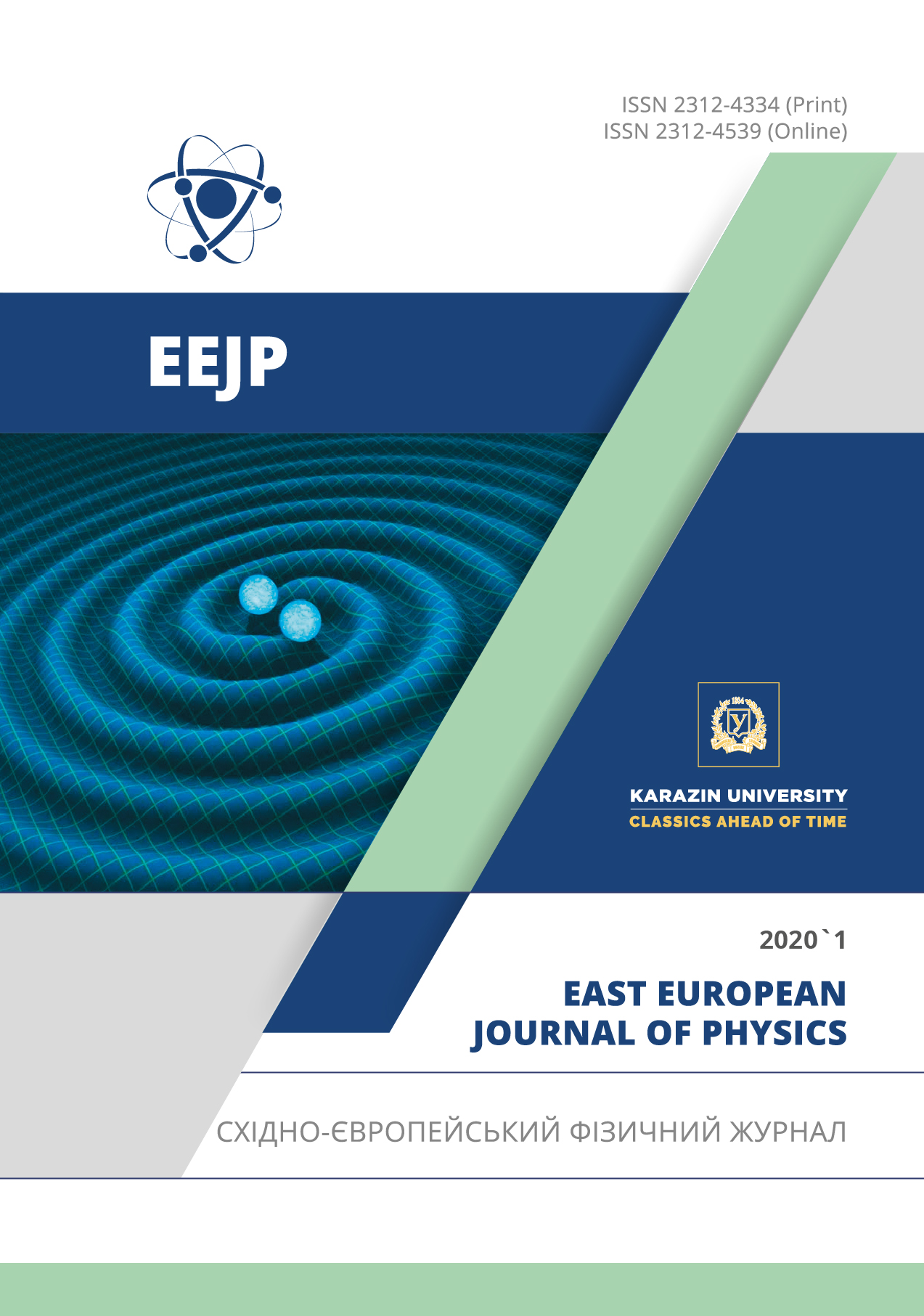On the Attenuation of a Wave Packet in Limited Systems Filled With an Active Medium and Plasma
Abstract
In the article, for limited system conditions that form the spatial structure of the field, the attenuation processes of wave packets of finite amplitude are considered. The line width of the wave field may be the result of the dissipative processes (in a quantum system it is inverse of the lifetime of energy levels) or the result of reactive processes (in classical waveguide systems this is the spectral width of the packet). In the case of filling the waveguide with an active two-level medium, a description is possible using a quasiclassical model of the interaction of the field and particles. In this case, the quantum-mechanical description of the medium is combined with the classical representation of the field. Here, the Rabi frequency plays an important role, which determines the probabilities of induced radiation or absorption of field quanta and the oscillatory change in population inversion (nutation). Depending on the relationship between the Rabi frequency and the line width of the wave packet, the process can change the nature of the field behavior. In strong fields or with a significant population inversion, the line width can be neglected, while the field energy density is quite high. In this case, one should expect noticeable nutations of population inversions with different frequencies corresponding to the local Rabi frequency in different regions of the waveguide, the interference of which will determine the oscillatory behavior of the wave field. At a low level of electric field intensity or a slight population inversion, the mode of changing the field amplitude becomes monotonic. Plasma field damping (Landau damping) is considered. The role of population inversion is assumed by a quantity proportional to the derivative with respect to velocity of the electron distribution function. If the spectral width of the packet is small, the process of wave attenuation acquires a characteristic oscillatory form due to the exchange of energy between the wave and the plasma electrons captured by its field. The attenuation of wide packets is almost monotonic with the formation of a characteristic “plateau” in the vicinity of the phase velocity of the wave on the electron velocity distribution function.
Downloads
References
P.S. Landa Auto-oscillations in distributed systems, (Nauka, Moscow, 1983), pp. 320. (in Russian)
A.S. Davydov Quantum mechanics, (Fizmatgiz, Moscow, 1963), pp. 748. (in Russian)
L. Allen and J. Eberly, Optical resonance and two-level atoms, (Witey-lnterscicitce Publication John Witty and Sons, New York- London-Sydney-Toronto, 1975), pp. 222.
V.M. Kuklin and E.V. Poklonskiy, East Eur. J. Phys. 3, 46-53 (2019), https://doi.org/10.26565/2312-4334-2019-3-06.
А. Einstein, Phys. Zs. 18, 121 (1917), http://web.ihep.su/dbserv/compas/src/einstein17/eng.pdf
L.D. Landau, JETP, 16, 574-586 (1946).
A.A. Rukhadze and V.P. Silin, in: Problems of Theoretical Physics. Scientific works. Issue 2, edited by A.G. Zagorodny, N.F. Shulga and V.M. Kuklin, (KhNU, Kharkiv, 2016), pp. 376. (in Russian)
A.A. Andronov, Izv. Vuz. Radiophysics, 4(5), 861–866 (1961). (in Russian)
A.N .Kondratenko and V.M. Kuklin, Fundamentals of Plasma Electronics, (Energoatomizdat, Moscow, 1988), pp. 320. (in Russian).
A.I. Akhiezer, I.A. Akhiezer, A.G. Sitenko, K.M. Stepanov and R.V. Polovin, Plasma Electrodynamics, (Pergamon, N.Y., 1975), pp. 431.
M.B. Bondarenko, A.N. Kondratenko and V.I. Tkachenko, Izv. Vuz. Radiophysics, 27(11), 962-967 (1984), (in Russian).
E.J. Valeo and C.R. Olerman, Phys. Rev. Lett. 30(21), 1035-1038 (1973), https://doi.org/10.1103/PhysRevLett.30.1035
J.J. Thomson and J.I. Karush, The Physics of Fluids, 17(8), 1608-1613 (1974), https://doi.org/10.1063/1.1694940.
V.M. Kuklin, Selected chapters (theoretical physics), (KhNU, Kharkiv, 2018), pp. 224. (in Russian).
Authors who publish with this journal agree to the following terms:
- Authors retain copyright and grant the journal right of first publication with the work simultaneously licensed under a Creative Commons Attribution License that allows others to share the work with an acknowledgment of the work's authorship and initial publication in this journal.
- Authors are able to enter into separate, additional contractual arrangements for the non-exclusive distribution of the journal's published version of the work (e.g., post it to an institutional repository or publish it in a book), with an acknowledgment of its initial publication in this journal.
- Authors are permitted and encouraged to post their work online (e.g., in institutional repositories or on their website) prior to and during the submission process, as it can lead to productive exchanges, as well as earlier and greater citation of published work (See The Effect of Open Access).








